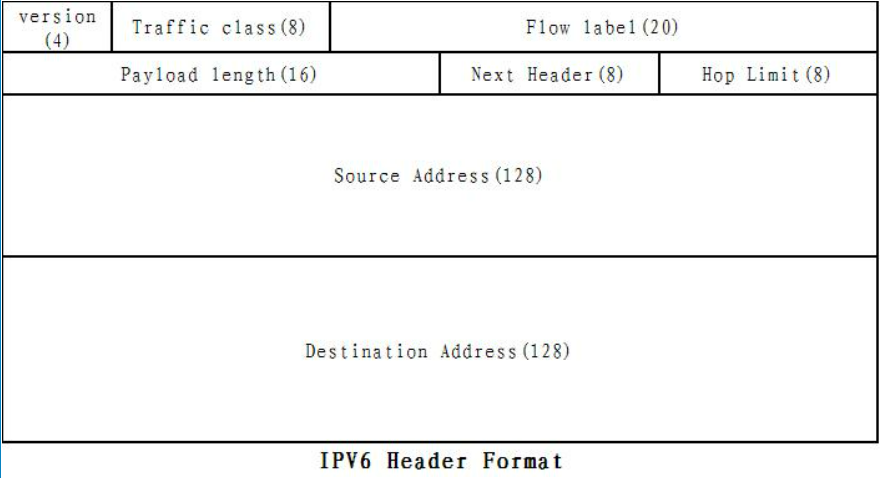The criteria for IPv4 were set out in the late 1970s. In the early 1990s, the application of WWW led to the explosive development of the Internet. With the increasingly complex Internet application types and the diversification of terminal , the provision of global independent IP addresses has begun to face heavy pressure. In this environment, in 1999, the IPv6 agreement was born.
IPv6 has an address space of up to 128 bits, which can completely solve the problem of insufficient IPv4 address. Since the IPv4 address is 32-bit binary, the number of IP addresses that can be represented is 232 = 42949,9672964 billion, so there are about 4 billion IP addresses on the Internet. After upgrading to 128-bit IPv6, the IP addresses in the Internet will theoretically have 2128=3.4 * 1038. If the earth's surface (including land and water) is covered with computers, IPv6 allows 7 * 1023 IP addresses per square meter; if the address allocation rate is 1 million per microsecond, it will take 1019 years to assign all addresses.
Format of the IPv6 packets
The IP v6 packet has a 40-byte basic header (base header), after that with 0 or more extended header (extension header), and then data. The following figure shows the basic header format of IPv6. Each IPV 6 packet starts with the basice header. Many fields in the basic header of IPv6 can directly correspond to the fields in the IPv4 .
(1) The Version (version) field is for 4 bits, which describes the version of the IP protocol. For IPv6, the field value is 0110, which is the decimal number 6.
(2) Communication type (Traffic class), this field occupies 8 bits, including the priority (priority) field has 4 bit. First, IPv6 divides the stream into two categories, which can be congestion control and not congestion control. Each category is divided into eight priorities. The larger of the priority value, the more important the group is. For congestion-controlled , the priority is 0~7, and the transmission rate of such packets can be slowed down when congestion occurs. For the can not be congestion controlled, the priority is 8 to 15, which are real-time services, such as the transmission of audio or video services. The packet transmission rate for this service is constant, even if some packets are dropped, it not retransmit.
(3) Flow mark (Flow lable): The field occupies 20 bits. Flow is a series of data packets on the Internet from a specific source site to a specific destination site (unicast or multicast). All packets belonging to the same stream have the same stream label. The source station randomly selects a flow label among 224-1 flow marks. Flow mark 0 is reserved to indicate flow marks not used. Random selection of stream labels by the source station does not conflict between computers. Because the router uses a combination of the source address and flow label of the packet when linking a particular stream with a packet.
All packets originating from a source station with the same non-zero stream label must have the same source address and destination address, the same hop-by-hop option header (if this header exists) and the same routing selection header (if this header exists). The advantage of this is that when the router processes a packet, just check the flow label without check anything else in the packet header. No flow label has a specific meaning, and the source station should specify the special processing that it wants each router performs on its packet in the extended header
(4) Net load length (Payload Length): The field length is 16 bits, which indicates the number of bytes contained in the IPv6 packet except for the header itself. This shows an IPv6 packet can hold 64 KB of data. Since the header length of IPv6 is fixed, it is not necessary to specify the total length of the packet (the sum of the header and data parts) as in IPv4.
(5) The next header (Next header): 8 bits in length. Identifies the type of expanding header following the IPv6 header. This field indicates the type of a header immediately following the basic one.
(6)The hop limit( Hop limit):(occupies 8 bits) to prevent packets from remaining in the network indefinitely . The source station sets a certain hop limit when each packet is sent. When each router forwards the packet, the value of the field for hop- limit should be reduced by 1. When the value of hop Limit is 0, the packet should be discarded. This is equivalent to the lifetime field in the IPv4 header, but it is simpler than the calculation interval time in IPv4.
(7) Source IP address (Source Address): This field occupies 128 bits and is the IP address of the sending station of this packet.
(8) Destination IP address (Destination Address): This field occupies 128 bits and is the IP address of the receiving station of this packet.
IPv6 packet format is belong to Shenzhen HDV Photoelectron Technology co., LTD., a software technical work, And the company has brought together a powerful software team for network related equipment (such as: AC ONU / communication ONU / intelligent ONU / fiber ONU/XPON ONU/GPON ONU etc). For every customer customize the exclusive demands who need it, also let our products more intelligent and advanced.






